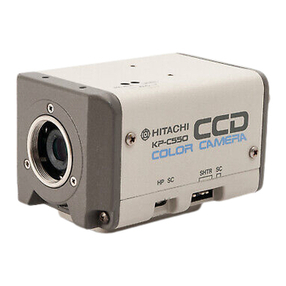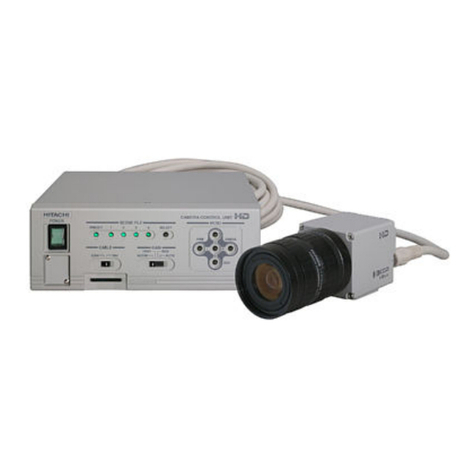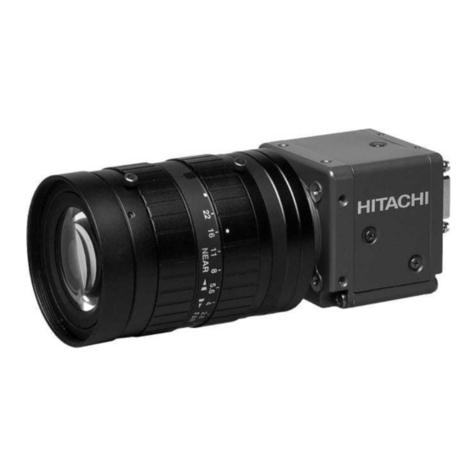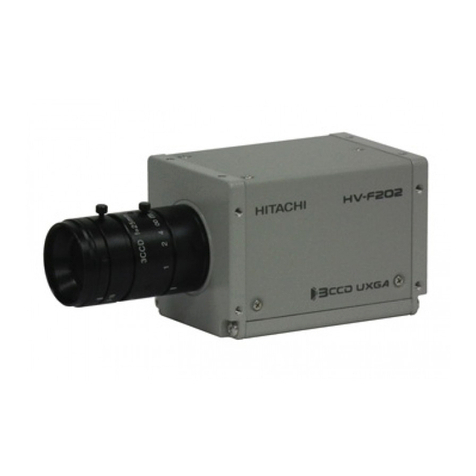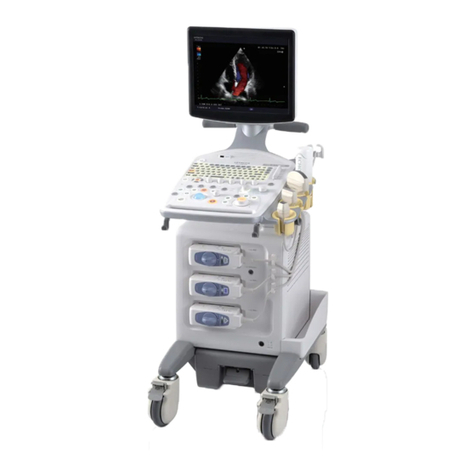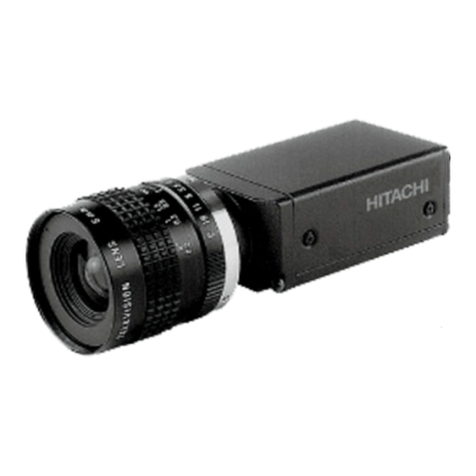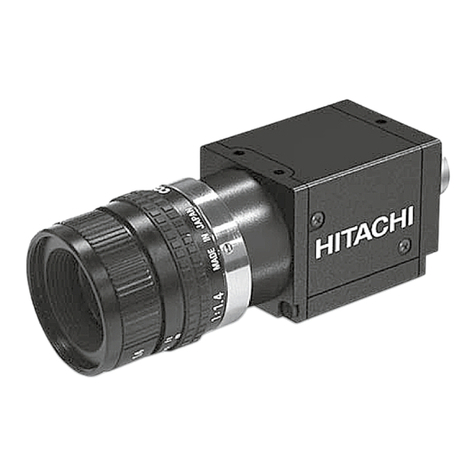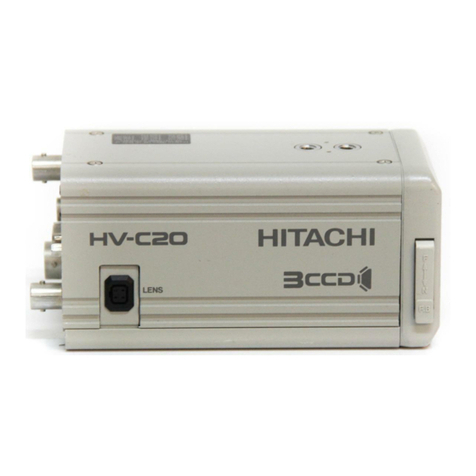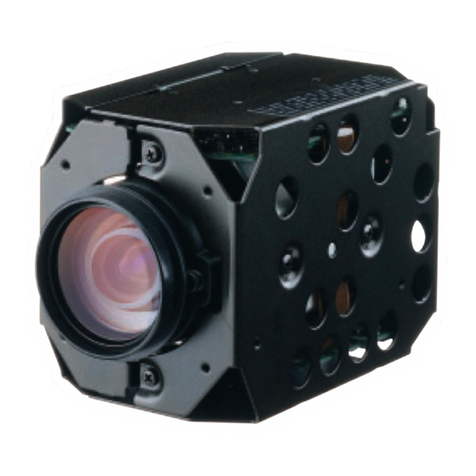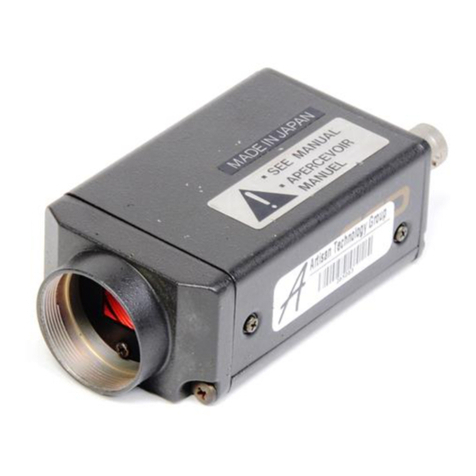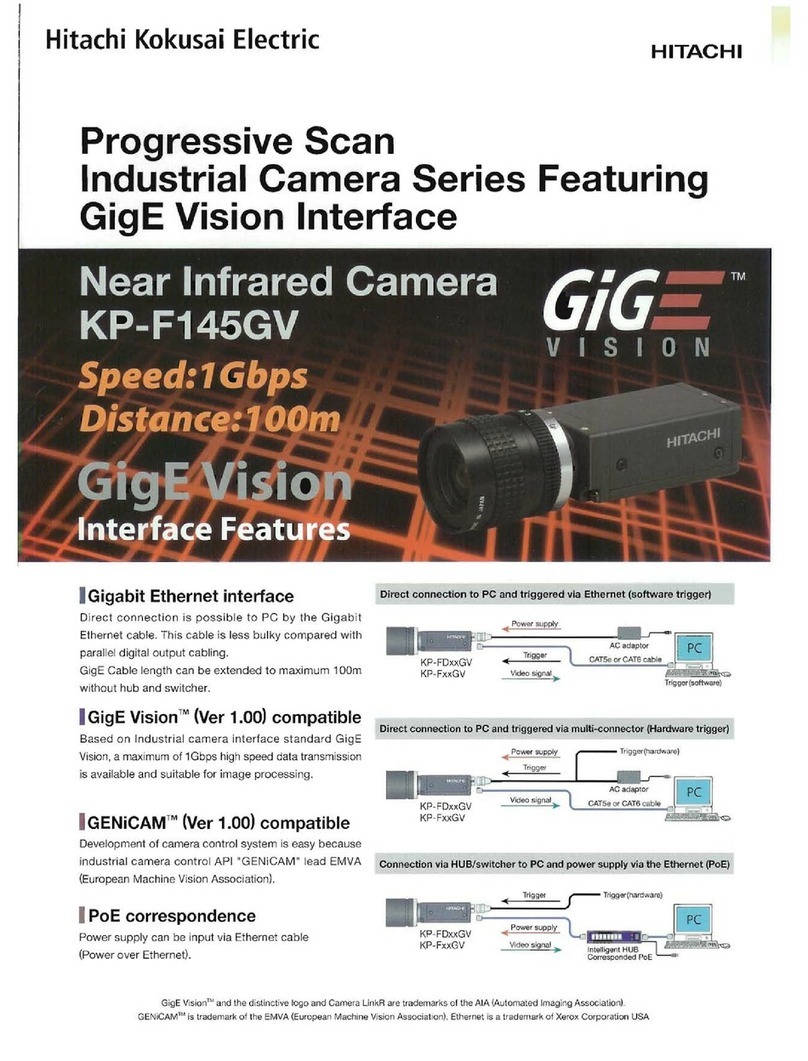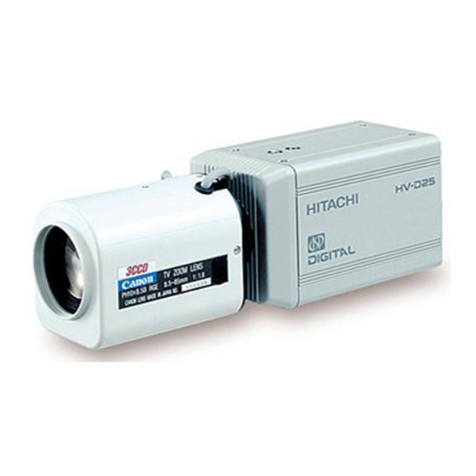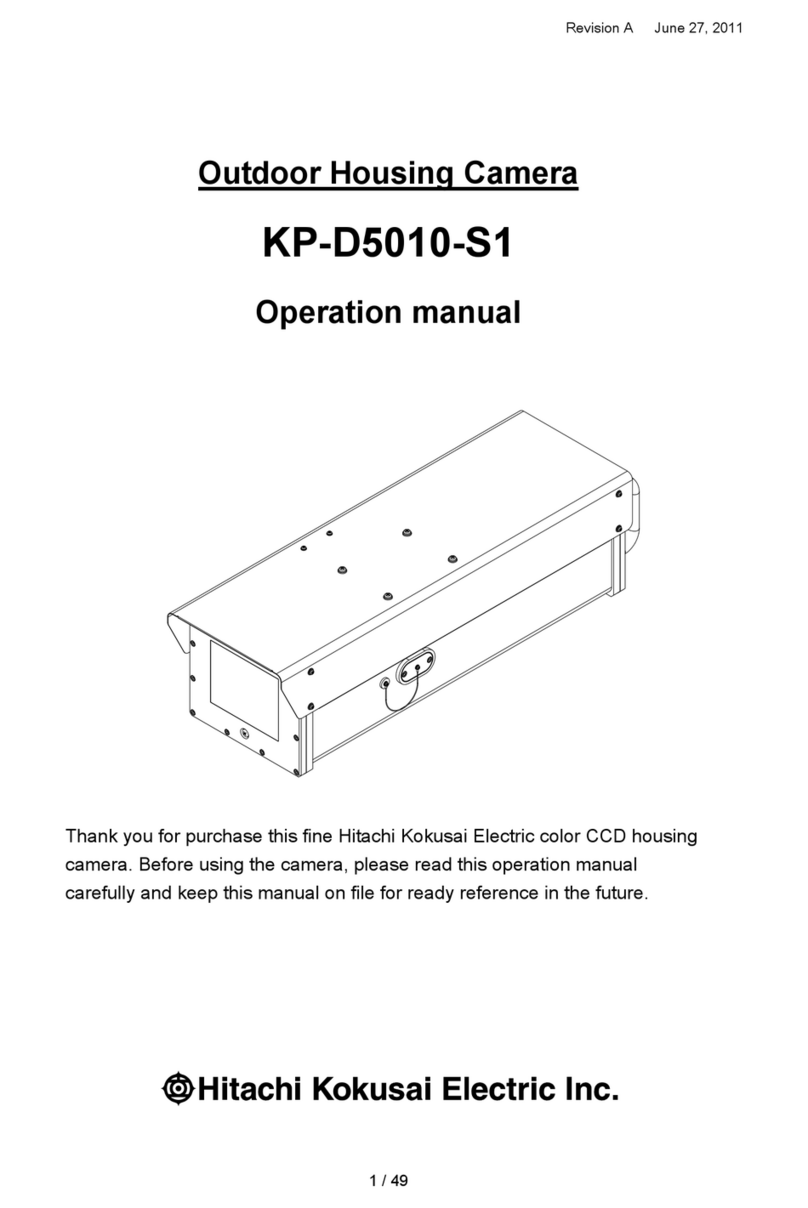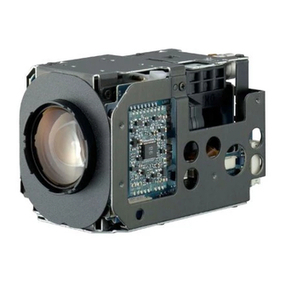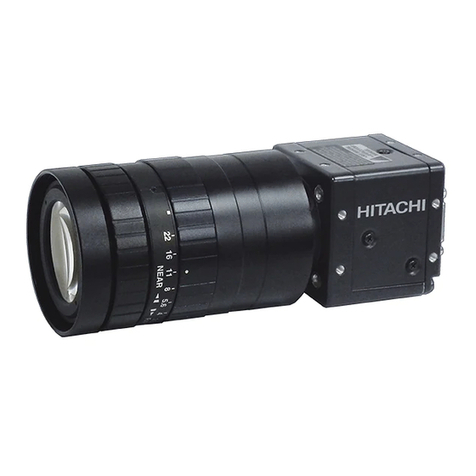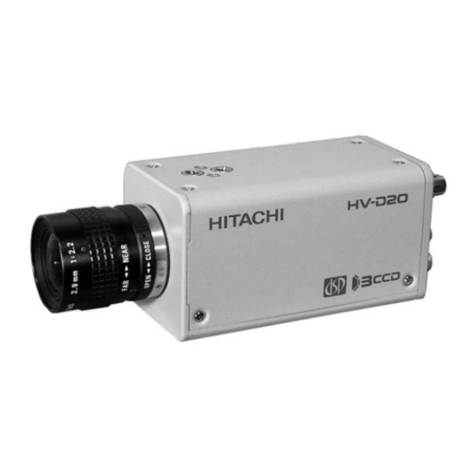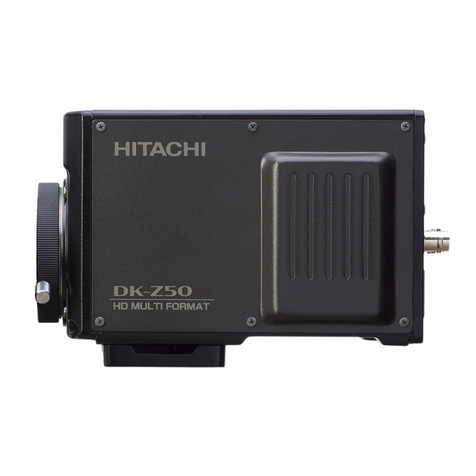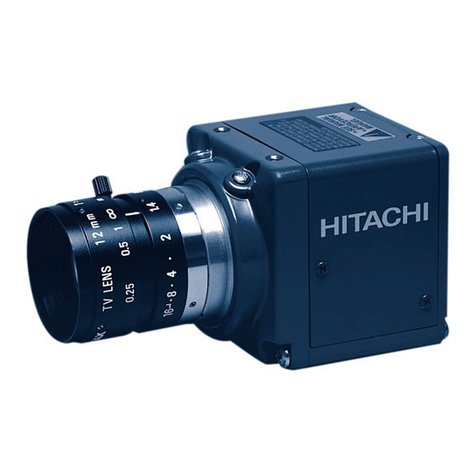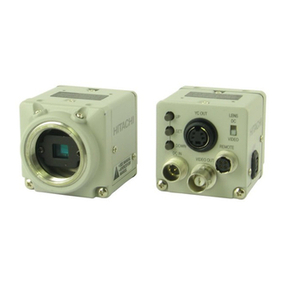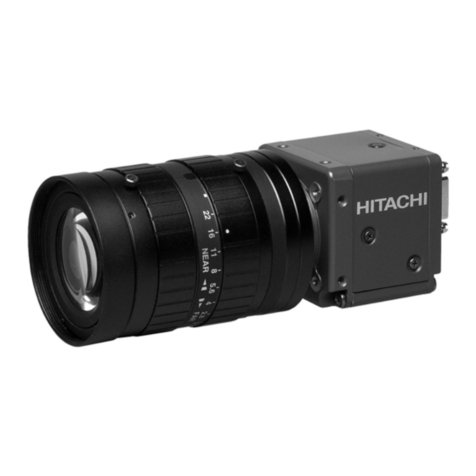Color system NTSC/PAL
Optical system 1/3-inch, F2.2 prism
Imaging system R, G, B 3CCD
Lens mount C-mount (Frangeback 17.526 mm in air)
CCD 1/3-inch interline transfer
Total pixels NTSC 811(H)×508(V)
PAL 795(H)×596(V)
Effective pixels NTSC 768(H)×494(V)
PAL 752(H)×582(V)
Effective image area NTSC 4.88(H)×3.66(V) mm
PAL 4.89(H)×3.64(V) mm
Horizontal resolution 800 TV lines (Y signal center, DTL off)
S/N NTSC 64 dB (DNR on) 64 dB (DNR off)
PAL 62 dB (DNR on) 59 dB (DNR off)
(Y OUT, γoff, DTL off, Gain 0 dB)
Standard sensitivity 2000 lx, F9.5
Sensitivity setting AGC (0 to +24 dB) /
Manual (0 to +24 dB, 1 dB step)
and Digital gain
(
approx. 0 to +6 +12 dB, 6 dB step
)
Minimum Sensitivity 0.9 lx(F2.2 +24 dB Digital gain on)
Electronic shutter 4 mode
Preset mode 1/100 s (PAL 1/60 s) to 1/100,000 s,
10 steps
Lock scan mode NTSC 1/60.38 s to 1/100,000 s
PAL 1/50.38 s to 1/100,000 s
Auto electronic Shutter (AES)
OFF to 1/100,000 s
Long term Field/Frame integration selectable
Integration NTSC 1/30 s to 8 s
PAL 1/25 s to 8 s (1 frame step)
(external image memory needed
for continuous image)
External trigger Field/Frame readout selectable
One pulse trigger input
White balance mode Preset : 3200 K/5600 K selection
Memory : Auto white balance
Auto: Real time auto white balance
Scene files 4 files
Color bars NTSC : SMPTE, PAL : FULL
Power supply voltage 12 V rated
(stable operation at 10.5 to 15 Vdc)
Power consumption 4.5 W approx
Dimensions 65(W) ×65(H) ×80(D) mm
Mass 400 g(14 oz) approx. (not include lens)
Ambient temperature Operating : -10 to +45 ºC (+14 to 113 F)
Storage : -20 to +60 ºC (-4 to 140 F)
1. Digital Signal Processor:
A 3rd generation Digital Signal Processor (DSP) chip utilizing
Hitachi’s most recent processing technology (0.18µm, internal
core, 1.8V drive, and 3 million gates) is contained on a single
newly developed ultra LSI (large scale integration) chip. The
new DSP enables the camera to achieve its small size, low
power consumption, and high stability.
2. Performance in a cube:
The camera is built into a compact cube with a short depth
dimension for easy incorporation into systems where space is
critical. The multi-functional design is conducive to a wide
range of industrial, medical, and other general purpose imaging
applications.
3. High picture quality:
High Sensitivity and High Resolution are achieved through the
use of three 1/3 inch CCD’s, each with 410,000 picture elements
(470,000 PAL). Together with the 12-bit analog to digital (A/D)
converter and 14-bit accelerated DSP a horizontal resolution of
800TV lines and a high signal to noise ratio (S/N) of 64 db (62 db
PAL) is obtained with the use of dynamic noise reduction (DNR).
Clear high quality low noise images are now possible even in a
high gain mode.
4. Adjustable Flange back:
A built-in flange back adjustment allows the cameras optical
focus to be optimized with the selected optical system.
5. Auto Shading Compensation (ASC):
The ASC function can automatically compensate for color shad-
ing errors caused by interaction between the lens and prism
assembly in C-Mount optical systems. Two modes of shading
are provided and can be selected according to the cameras
application, a color shading mode or a two-dimensional lumi-
nance-shading mode.
1. Four scene files are provided for the setup, storage and recall
of all camera functions.
The camera configuration can be easily changed through the
selection of a scene file.
2. A six-vector color corrector allows independent adjustment of
the hue and saturation of the primary and secondary colors so
that optimum color fidelity can be maintained.
3. A versatile color detail adjustment circuit enables the selection
and independent adjustment of detail in two separate colors.
This function can be used as a “flesh tone detail” circuit for
smoothing human complexion, or for enhancing a color con-
tour for increased visibility.
4. Dynamic Chroma Compensation is provided to maintain proper
color saturation in scenes with high luminous levels. Dynamic
range is expanded allowing high quality reproduction of out-
door and other difficult scenes.
5. Intelligent Auto Level Control (ALC) can be selected to allow
unattended operation over a wide range of light levels. Digital
light metering, CPU controlled automatic gain control (AGC),
lens iris, and an auto electronic shutter (AES) operate under
continuous control to compensate for varying light levels. Auto
Tracking White Balance (ATW) can also be selected to maintain
proper color temperature with changing light levels. Note:
AES functions continuously only with a manual override lens.
6. Flare Compensation can be adjusted to compensate for color
changes in dark areas, improving color fidelity, when a zoom
lens is used on the camera.
7. Picture polarity can be selected as normal (positive) or nega-
tive, to suit the imaging requirements.
8. A full complement of video outputs is provided on the camera.
Outputs include composite, Y/C, RGB, or Y/ R-Y/ B-Y.
Simultaneous output of composite, Y/C and an additional com-
ponent signal is possible, utilizing two separate output con-
nectors.
9. The camera can be synchronized with external devices using
the genlock input or by use of external HD and VD signals.
Composite sync, HD and VD signals can be output for use with
other equipment.
10. An External Trigger Signal can be used in the field-on-demand
mode of operation to provide the capture of an image at a
desired timing and exposure. Several trigger modes are avail-
able to suit the intended application. A long term integration
mode of up to 8 seconds can be used to capture images at
extremely low light levels.
11. An RS-232C port is provided for bi-directional communications
with an external device, allowing complete control, setup and
operation of all camera functions.
